Space News
Universe Today
365

Image Credit: Universe Today
Rover Finds the Shoreline of an Ancient Beach on Mars
- Data from the Chinese rover Zhurong provides evidence for ancient oceans on Mars through radar scans of buried structures resembling ocean shorelines.
- Zhurong's ground-penetrating radar found thick layers of material similar to beach deposits, suggesting past wave action along the shore of an ocean on Mars.
- Scientists are studying the Utopia Planitia region where Zhurong landed to investigate Mars's ancient warm, wet past and potential existence of long-gone seas.
- Findings indicate ice-free oceans on Mars, implying a warmer climate in the past, with potential habitable environments and river flows.
- The presence of shoreline structures on Mars suggests a hydrologically active period allowing for the accumulation of sediments and potential nutrients.
- Past missions like Viking also hinted at the presence of water bodies on Mars, with shorelines showing evidence of Martian oceans.
- Changes in Mars's rotation due to volcanic activity in the Tharsis region are believed to have altered the shape of ancient shorelines on the planet.
- The buried shorelines tell a story of the last days of oceans on Mars, lasting tens of millions of years before drying up and being covered by regolith.
- The Zhurong data provides a unique dataset of pristine shoreline deposits under the Martian subsurface, offering insights into Mars's past climate.
- These findings deepen our understanding of Mars's geological history and potential for past habitability, revealing intriguing evidence of ancient shorelines.
Read Full Article
21 Likes
Livescience
41
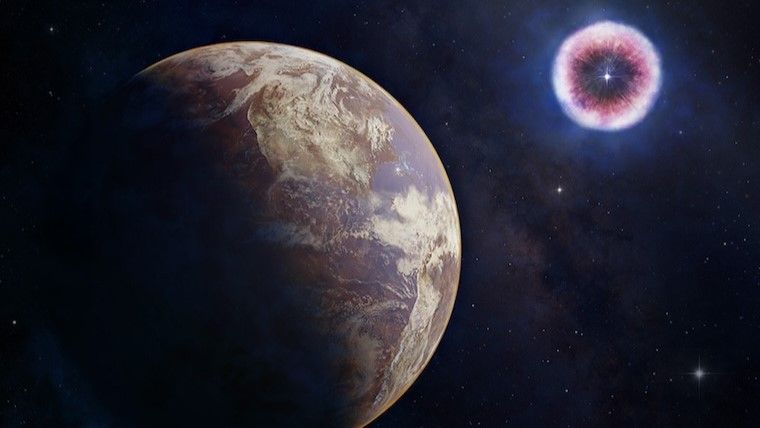
Image Credit: Livescience
Did a supernova 6 million years ago kickstart evolution in Africa? New study offers a clue.
- Radiation from an ancient supernova may have influenced the evolution of life on Earth, according to a new study.
- The study suggests a possible link between the rapid explosion in diversity of viruses infecting fish in Africa's Lake Tanganyika and cosmic rays from the supernova.
- Lake Tanganyika witnessed a surge in virus diversity at the same time that Earth was impacted by cosmic rays from the ancient supernova.
- The researchers found high levels of iron-60 isotope in core samples, indicating presence of supernova debris and supporting the hypothesis.
Read Full Article
2 Likes
Nasa
264
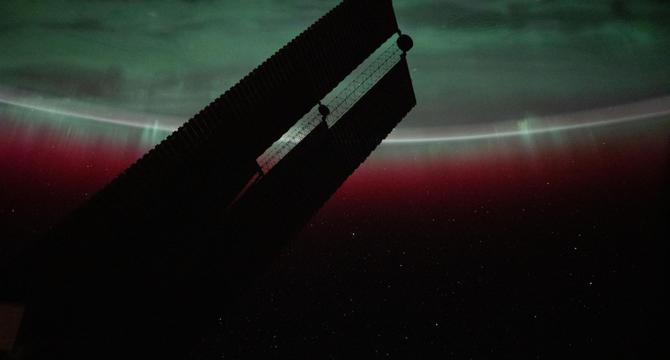
Image Credit: Nasa
Crew Explores Cellular Immunity, Digestion and Waits for Cargo Mission
- Cellular immunity and digestion were the main research topics on Wednesday as the Expedition 72 crew explored space biology aboard the International Space Station.
- NASA Flight Engineer Nick Hague collected blood and saliva samples for the Immunity Assay investigation, aiming to understand space-caused cellular stress and tissue damage.
- NASA Flight Engineers Don Pettit and Butch Wilmore performed spacesuit maintenance, cleaning water cooling loops and checking the communications system.
- The Roscosmos Progress 91 cargo craft is scheduled to dock to Zvezda’s aft port, delivering three tons of food, fuel, and supplies to the Expedition 72 crew.
Read Full Article
15 Likes
Livescience
424

Image Credit: Livescience
Chinese scientists reveal plans for near-invisible stealth missiles that could 'redefine modern warfare'
- Chinese scientists claim to have made a breakthrough in rocket propulsion for stealth missiles, inspired by faults in the Boeing spacecraft last year.
- The technology uses helium injection to mix with fuel, enhancing efficiency and reducing the chances of a leak.
- The new rocket design can potentially change speed midair, making it harder to track or intercept.
- Researchers say the engine can generate over three times the thrust of using fuel alone.
- The engine's exhaust plume is claimed to be cooler, making missiles nearly invisible to early-warning systems.
- The technology could be applied to stealth weaponry and significantly lower the cost of sending rockets into space.
- The advancements may support China's satellite constellation project and plans for a moon base by 2035.
- China aims to launch reusable rockets and leverage new technology to reduce costs and achieve lunar ambitions.
- This technology could redefine modern warfare and space travel, with potential global implications.
- The helium injection idea could revolutionize rocket propulsion and aid in avoiding countermeasures.
Read Full Article
25 Likes
Discover more
Livescience
173

Image Credit: Livescience
'Planet parade' 2025: See the ultra-rare planetary alignment peak this week, before Saturn gets swallowed by the sunset
- Seven planets in the solar system will line up in a rare 'planetary parade' in the night sky on February 28.
- Mercury will join the parade for a few days, before Saturn gets obscured by the sunset in early March.
- Five of the planets will be visible to the naked eye, while a good telescope is needed to view the others.
- The best time to view all seven planets in the Northern Hemisphere will be after sunset on February 28.
Read Full Article
10 Likes
Universe Today
397
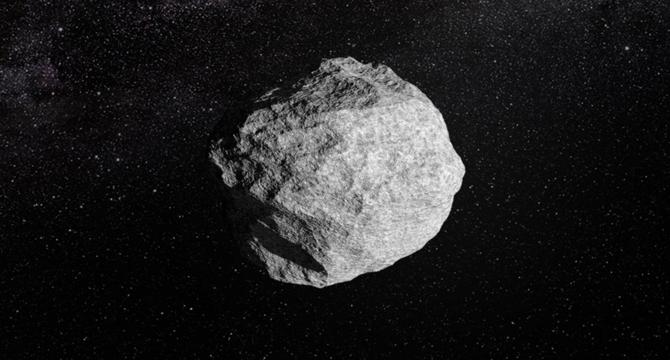
Image Credit: Universe Today
As Expected, the Threat from 2024 YR4 has Essentially Dropped to Zero
- Initial estimates of Asteroid 2024 YR4's chance of striking Earth in 2032 has decreased from 2.8% to 0.001% according to the European Space Agency.
- Being discovered post-Christmas by ATLAS telescope in Chile, 2024 YR4's impact probability triggered our planetary defense.
- While small in size (40-90 meters), the asteroid could still cause significant damage if it hit a populated area.
- Observations initially showed a spike in the asteroid's impact probability, which then decreased significantly over time.
- Advanced telescopes like the ESO's Very Large Telescope struggled to observe the asteroid due to its size and darkness.
- Close monitoring by the ESA's Near-Earth Object Coordination Centre helped refine 2024 YR4's orbit and threat assessment.
- The asteroid's elliptical orbit crosses Earth's path, bringing it close to our planet periodically.
- The rise and fall of impact probabilities due to gravitational interactions with Earth and the Moon is a common pattern in asteroid monitoring.
- Efforts are ongoing to detect and track potentially hazardous asteroids, with future missions aiming at asteroid deflection strategies.
- While the threat from 2024 YR4 has decreased, it highlights the ongoing need for planetary defense measures and understanding space risks.
Read Full Article
23 Likes
Nasa
401
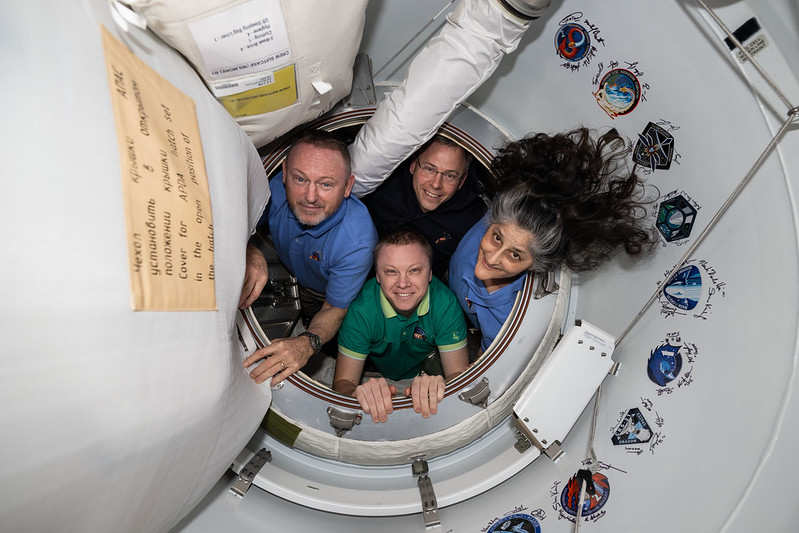
Image Credit: Nasa
NASA’s SpaceX Crew-9 to Discuss Space Station Mission, Upcoming Return
- NASA's SpaceX Crew-9 astronauts will discuss their space station mission and upcoming return on Tuesday, March 4.
- The crew members, including NASA astronauts Nick Hague, Suni Williams, and Butch Wilmore, along with Roscosmos cosmonaut Aleksandr Gorbunov, will participate in a news conference from the International Space Station.
- The Crew-9 mission has contributed to various scientific experiments, including studying plant growth, printing 3D medical devices, and swabbing the station's exterior for microbes.
- The upcoming departure of Crew-9 will be followed by the arrival of Crew-10, and mission teams will review weather conditions for the splashdown sites off the coast of Florida.
Read Full Article
24 Likes
Universe Today
136

Image Credit: Universe Today
So This is How You Get Magnetars
- Neutron stars known as magnetars have extremely powerful magnetic fields, but the process for generating these fields has been unclear.
- A recent study suggests low-field magnetars, which have weaker magnetic fields, utilize a Tayler-Spruit dynamo process.
- The Tayler-Spruit dynamo involves the differential rotation of a stellar core, transferring angular momentum to generate bursts of intense magnetic fields.
- This process is unique to low-field magnetars and provides insights into the origins of their powerful magnetic fields.
Read Full Article
8 Likes
TechCrunch
319

Image Credit: TechCrunch
TechCrunch Disrupt 2025: 3 days left to save up to $1,130 on passes
- Save up to $1,130 on passes for TechCrunch Disrupt 2025 in the last three days.
- TechCrunch Disrupt celebrates its 20th anniversary this year, happening from October 27-29 at Moscone West in San Francisco.
- Highlights of Disrupt 2025 include AI insights, learning from industry experts, interactive sessions, and witnessing the Startup Battlefield 200 competition.
- Register now to secure the biggest ticket savings before the rates go up after February 28.
Read Full Article
19 Likes
Nasa
438
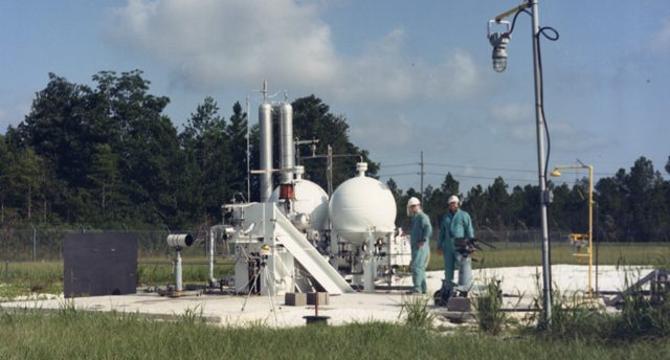
Image Credit: Nasa
NASA Stennis Flashback: Learning About Rocket Engine Smoke for Safe Space Travel
- NASA Stennis Space Center served as a hands-on classroom for NASA engineers to improve space shuttle main engine efficiency through rocket engine plume exhaust diagnostics from 1988 to the mid-1990s.
- The Diagnostic Test Facility at NASA Stennis conducted tests to study rocket engine exhaust, aiding in understanding engine health and operation, similar to a doctor's checkup.
- Constructed in the late 1980s, the Diagnostic Testbed Facility featured a control center, data analysis center, and allowed for testing 1,000-pound-thrust rocket engines to simulate space shuttle main engines.
- Engineers at the facility analyzed engine exhaust plumes, utilizing remote cameras, spectrometers, and microcomputers to determine the emissions of metals and elements during combustion.
- The facility played a crucial role in engine safety operations, allowing for real-time learning opportunities in exhaust diagnostics and multiple short-duration hot fire tests.
- Glenn Varner, a NASA Stennis engineer, highlighted the valuable learning experience at the Diagnostic Test Facility, involving tasks such as purging, ignition, and handling propellants.
- The facility's impact extended beyond testing, contributing to collaborations with commercial companies and paving the way for the success of the NASA Stennis E Test Complex.
- Knowledge and equipment from the Diagnostic Testbed Facility have been leveraged for two decades at NASA Stennis, supporting various aerospace projects and infrastructure development.
- Engineers who worked at the facility have transitioned to supporting E Test Complex projects, sharing their expertise in propulsion operations and contributing to the center's future infrastructure and knowledge.
- The Diagnostic Testbed Facility's legacy endures at NASA Stennis, showcasing a spirit of innovation and collaboration that continues to drive advancements in space exploration.
Read Full Article
26 Likes
Earthsky
114

Image Credit: Earthsky
Lucy spacecraft eyeballs next target in exciting new images
- The Lucy spacecraft, on its mission to explore the Trojan asteroids around Jupiter, is currently focusing on the main-belt asteroid Donaldjohanson, as depicted in images shared by NASA on February 25, 2025.
- Scheduled for April 20, Lucy's encounter with the 2-mile-wide Donaldjohanson will precede its investigations of Jupiter's Trojan asteroids in 2027.
- Lucy, having previously imaged the main-belt asteroid Dinkinesh with its contact-binary moon Selam, is set to unveil new findings with Donaldjohanson.
- After launching in 2021, Lucy received a gravity assist from Earth in 2022, paving its way towards the outer solar system for further exploration.
- Jupiter's Trojan asteroids are considered remnants from the early solar system, offering valuable insights into planetary formation.
- The Lucy spacecraft's extensive voyage will provide key information about the solar system's evolution and history, akin to its fossil namesake, Lucy.
- Deputy principal investigator Cathy Olkin highlights Lucy's unique opportunity to study the diverse Trojan asteroids and their formation.
- The upcoming encounters with Trojan asteroids mark the first time a spacecraft will explore these ancient relics within Jupiter's orbit.
- By unraveling the mysteries of the Trojan asteroids, Lucy aims to enhance our understanding of the broader planetary system's development.
- The Lucy spacecraft's ultimate goal is to reach the Trojan asteroids, contributing to significant advancements in solar system exploration.
Read Full Article
6 Likes
Livescience
223
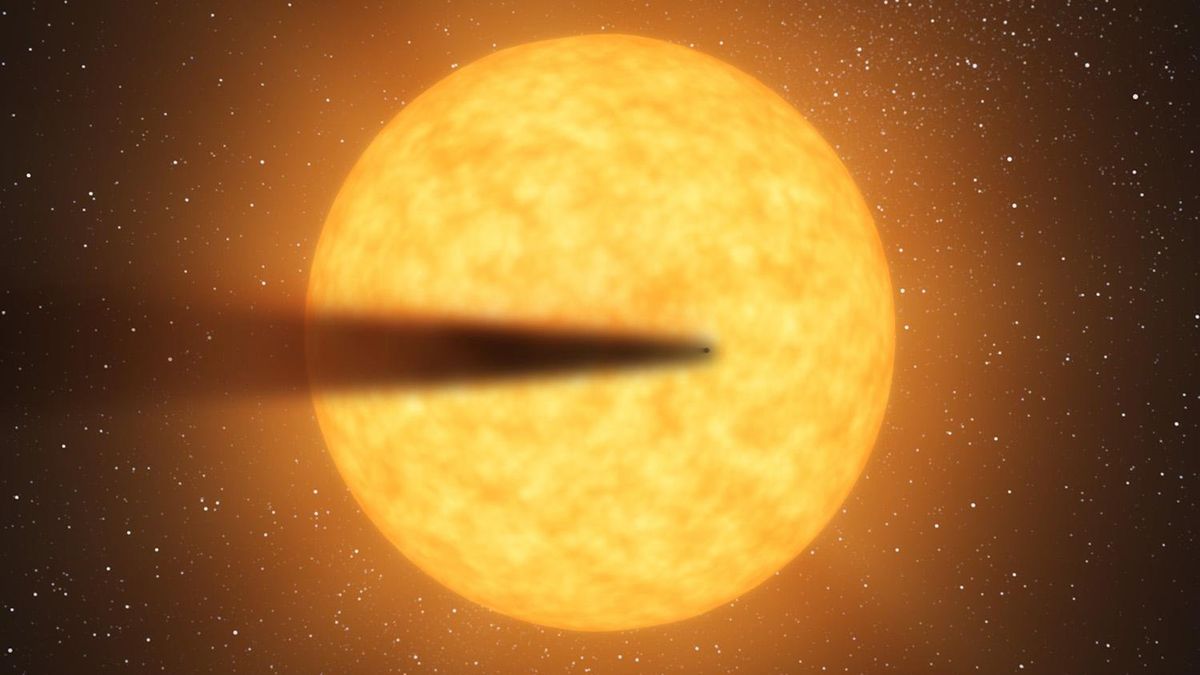
Image Credit: Livescience
'Utterly cataclysmic': James Webb telescope spots 2 alien planets disintegrating before our eyes
- Astronomers have directly observed two exoplanets shedding their outer layers into space for the first time.
- The first exoplanet, K2-22b, is a Neptune-size rocky world with temperatures that can melt and vaporize rock.
- The second exoplanet, BD+054868Ab, has two massive tails and is losing a moon's worth of material every million years.
- The findings provide valuable insights into the composition and behavior of exoplanets.
Read Full Article
13 Likes
Earthsky
13

Image Credit: Earthsky
New lunar lander Athena launches to the moon today
- The lunar lander Athena, Intuitive Machines' newest mission to the moon, is ready to launch today.
- Athena will be launched on a SpaceX Falcon 9 rocket from the Kennedy Space Center in Florida.
- The goal of the Athena mission is to demonstrate lunar mobility, resource prospecting, and analysis of volatile substances from subsurface materials, with the aim of uncovering water sources beyond Earth.
- Athena is expected to take about one week to reach the moon.
Read Full Article
Like
Earthsky
59

Image Credit: Earthsky
Get an exclusive peek inside NASA’s Vehicle Assembly Building
- NASA’s Vehicle Assembly Building (VAB) is the largest single-story building in the world and one of the largest buildings in the world by volume.
- It covers eight acres (32,000 square meters) and is 525 feet (160 meters) tall and 518 feet (157 meters) wide.
- The VAB is where engineers stack the rockets before rolling them out to the launch pad.
- Artemis 2, the U.S. mission to return humans to the moon, was captured inside the VAB.
Read Full Article
3 Likes
For uninterrupted reading, download the app